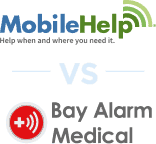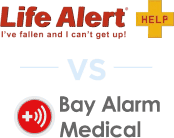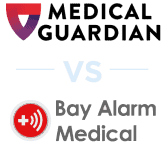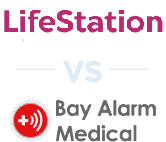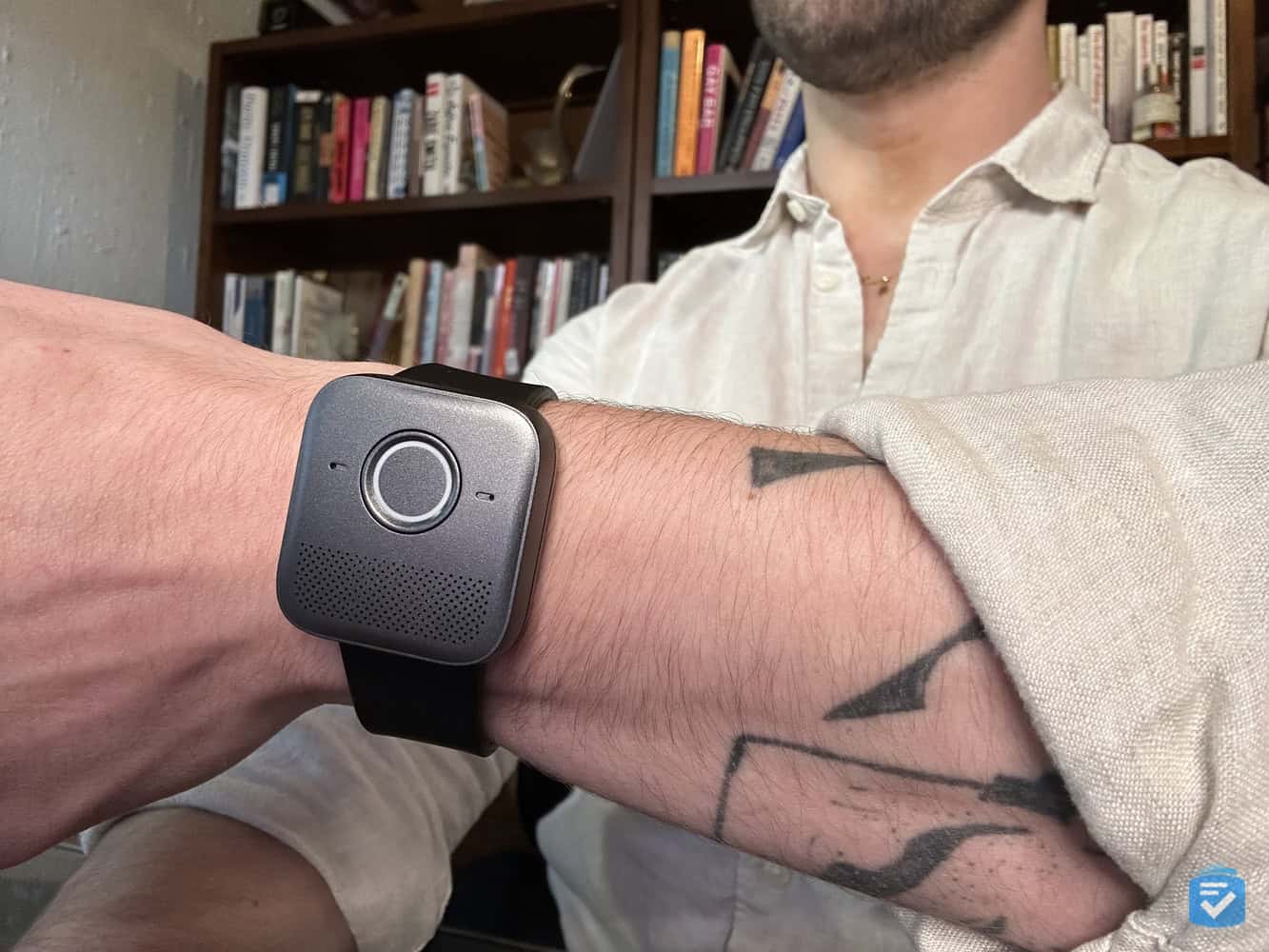
Bay Alarm Medical SOS Micro Review, Hands-On Test


SOS Micro: Key Findings
- In our series of 10 test calls, the SOS Micro connected us to live operators in an average of 16 seconds.
- The SOS Micro costs $29.95 per month ($10 extra for fall detection), which is roughly average for a medical alert system with GPS.
- With the free Bay Alarm Medical app, loved ones can track the SOS Micro’s location and receive notifications when an emergency call is placed.
FYI: While the SOS Micro performed well in our tests, several devices gave us faster access to help. To see which systems performed better, check out our full rundown of this year’s best medical alert systems.
Why Trust Us?
Our team of caregivers, experts, and health-care professionals conducted over 5,000 hours of in-depth research and testing. The results informed our recommendations for the most reliable brands and devices. In this process, our team:
- Tested 50 medical alert devices from 15 different brands.
- Surveyed 1,250 seniors and caregivers about their medical alert system usage.
- Consulted with nurses, EMTs, and caregivers who are experts at caring for older adults.
- Published dozens of videos that demonstrate our medical alert system tests.
- Evaluated verified customer reviews of medical alert companies on the website of the Better Business Bureau.
- Continues to monitor developments in the world of medical alert systems and revises our findings accordingly.
How We Tested the SOS Micro
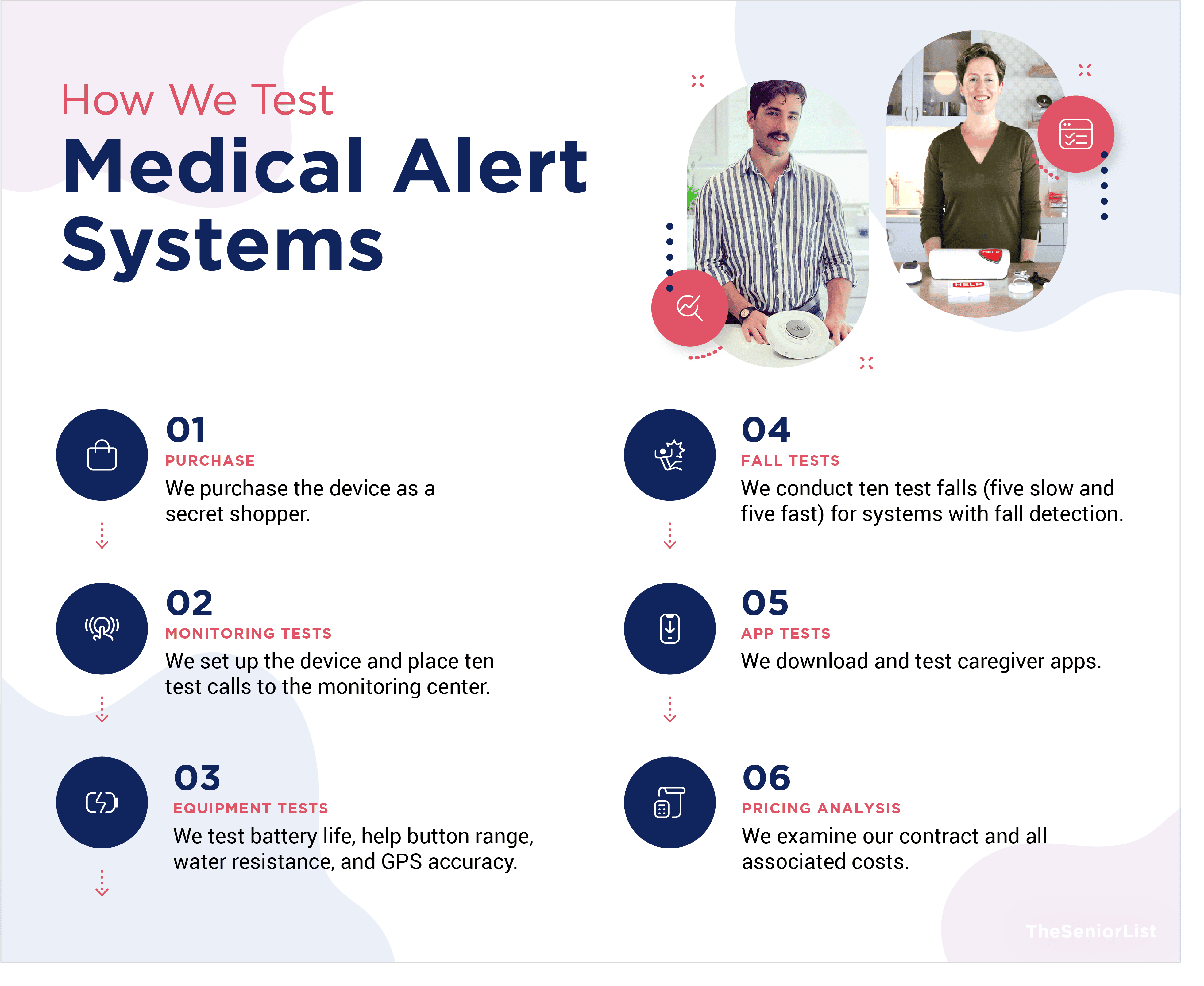
To test and evaluate the SOS Micro, we considered the following criteria:
- Response times: We placed 10 test calls with the SOS Micro and calculated the average response time.
- Ease of use: Through testing and design analysis, we ensured the device was easy to use, particularly for those with visual impairments and manual dexterity issues.
- Customer care: We conducted extensive interactions with Bay Alarm Medical’s customer care teams and monitoring agents to ensure they offer adequate support.
- Affordable pricing: We analyzed the costs of the SOS Micro and compared them to similar systems from other companies.
- Flexible contracts: We read the fine print of our SOS Micro service agreement, ensuring there were no unexpected fees or obligations.
- Extra features: In addition to conducting test calls, we also tested the SOS Micro’s fall detection, water resistance, and GPS capabilities.
SOS Micro Pros and Cons
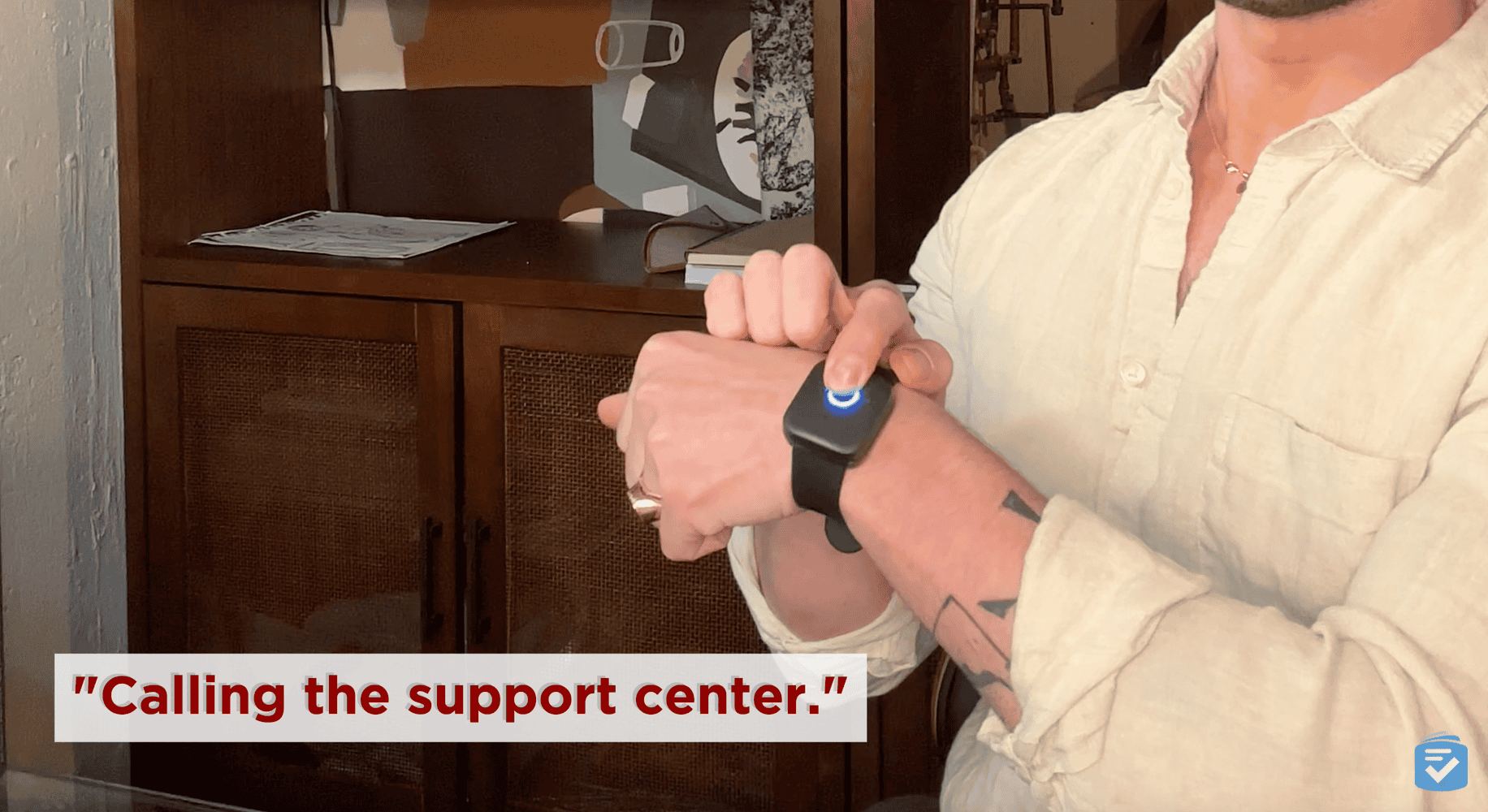
Pros
- Fast response times: In our 10 test calls, the SOS Micro connected us to help in an average of 16 seconds.
- Multiple attachments: The SOS Micro can be worn as a medical alert bracelet or on the included pendant and belt clip attachments.
- Useful caregiver app: The Bay Alarm Medical app allows loved ones to track a device’s location, battery life, and usage history.
- Decent price: At $29.95 per month, the SOS Micro is more affordable than medical alert systems from Medical Guardian.
Cons
- Faulty notifications: While we appreciate that the Bay Alarm app is free, its push notification feature did not always work.
- Shorter battery life: Lasting 48 hours in our tests, the SOS Micro’s battery does not last as long as that of the SOS All-In-One 2.
FYI: To learn about my experience with other Bay Alarm Medical devices, read our full Bay Alarm Medical review.
SOS Micro Video Review
SOS Micro Specs
| Size | W: 1.2" H: 1.3" D: 0.4" |
|---|---|
| Battery Life | 48 hours |
| Fall Detection | $10 per month |
| Cellular Connection | 4G LTE |
| GPS | Yes |
| Caregiver Portal | Included |
| Health Monitoring | Not available |
Testing the SOS Micro
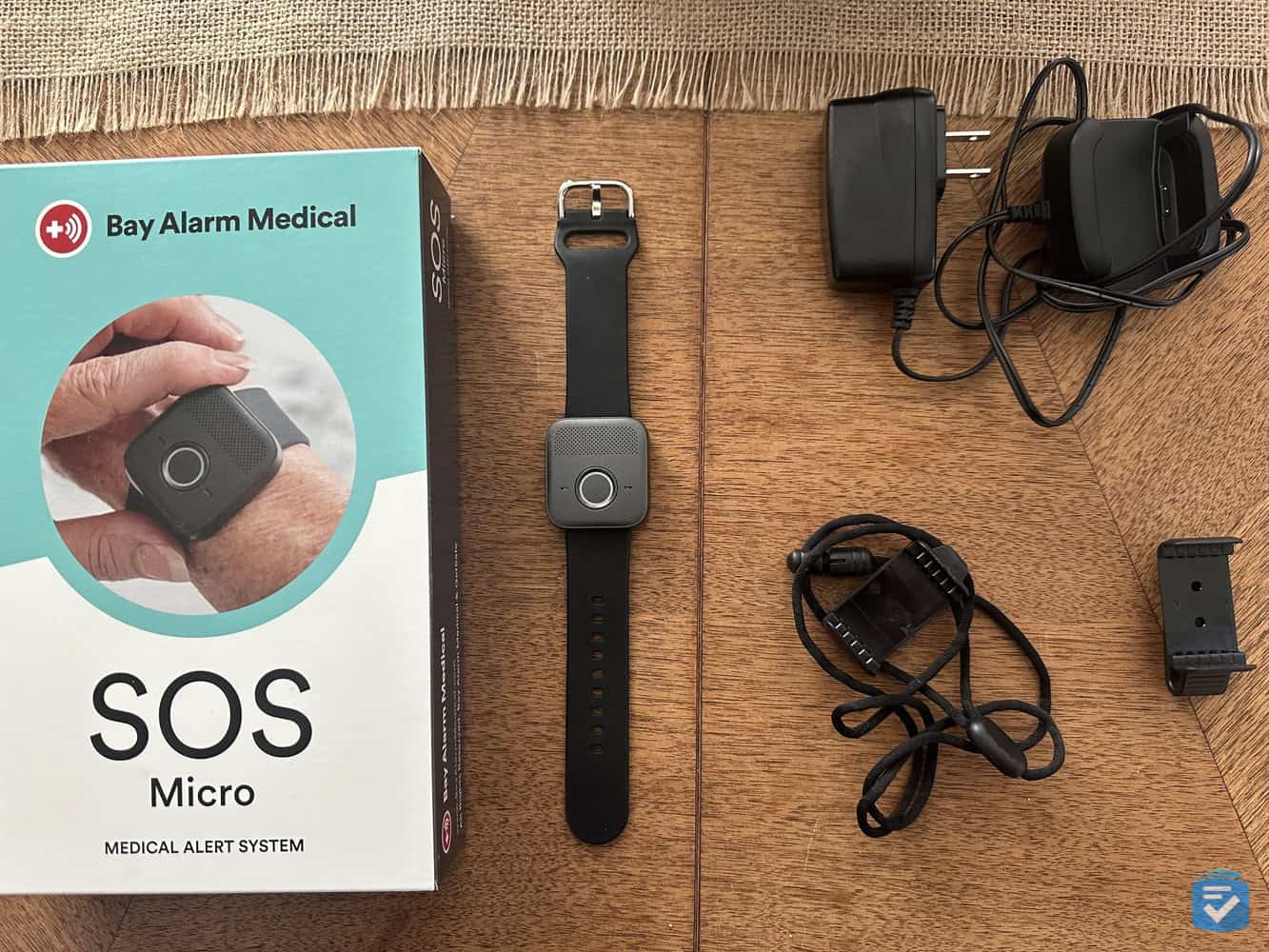
After receiving my SOS Micro in the mail, I unpacked the device and found the following:
- 1 SOS Micro device
- 1 lanyard attachment
- 1 bracelet attachment
- 1 belt clip attachment
Unlike other medical alert systems, the SOS Micro has fall detection built into the device — no extra wearables are required to use this feature.
Installation


Getting the SOS Micro up and running was incredibly simple and fast. The device came preconfigured with a SIM card already installed. All I had to do was place it in the charging cradle and wait for it to turn on. While it was powering up, I attached the lanyard to the mobile unit.
After the device was fully charged, I pressed the help button to make my first test call. An agent quickly responded, verifying that the device was working properly.
Performance
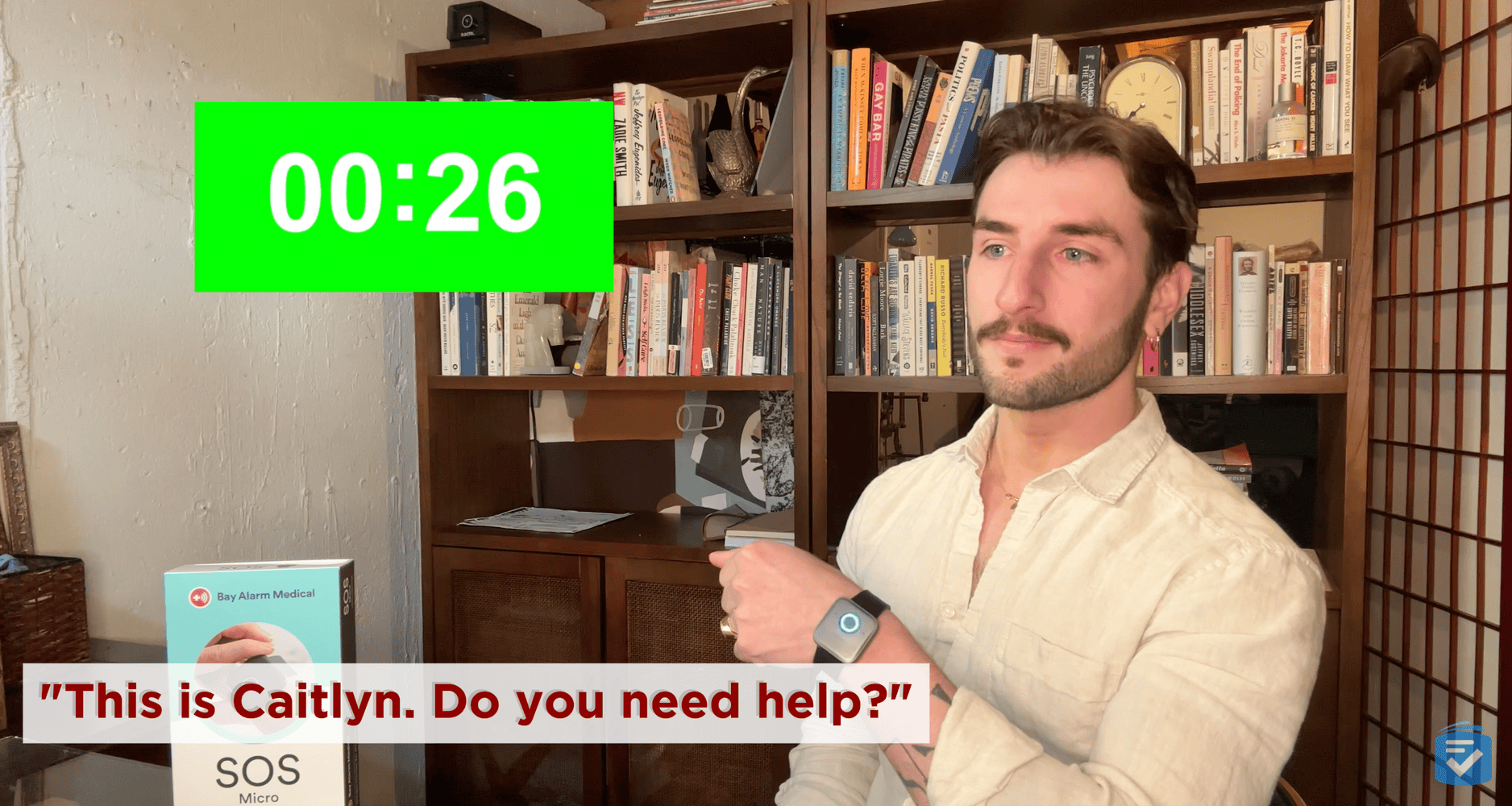
After my system was fully charged, I performed a total of 10 test calls — five from inside my house and five while walking around my neighborhood. Every call was answered promptly, with an average wait time of approximately 16 seconds from pressing the button to connecting with an agent.
During each call, the agent confirmed that I was only testing the device and didn’t require help. Before ending the call, they asked me to confirm my name and address.
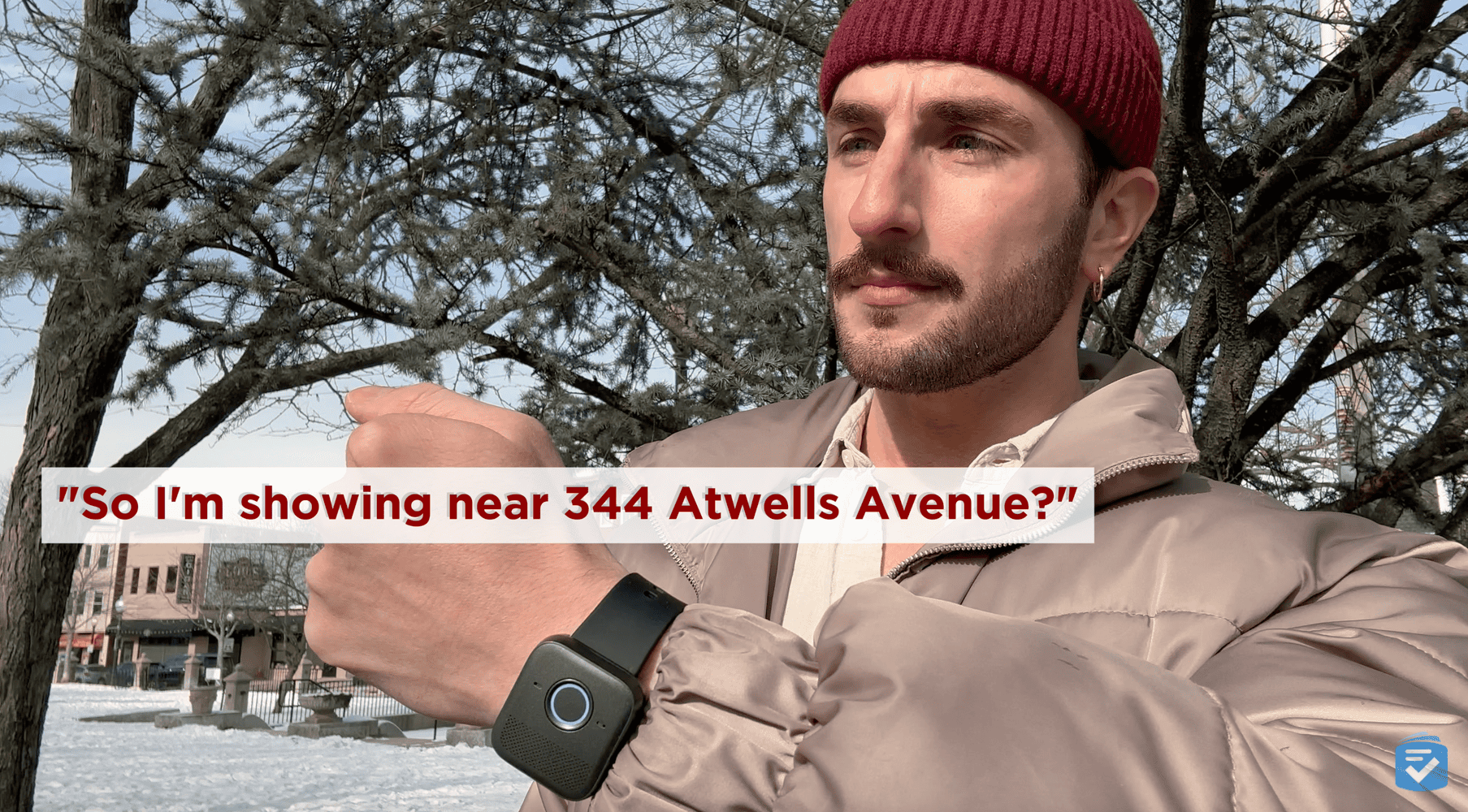
For the calls placed outdoors, I asked the agents to confirm my location. Each time, they pinpointed my position correctly, including nearby cross streets. This capability would be crucial in an emergency away from home, as the agent could guide EMS to the precise location.
Overall, I was pleased with how the device performed, and it was small and comfortable to wear. My only issue was that the speaker volume was somewhat low. When the wind picked up, it became a bit challenging to communicate with the response agent.
Fall Detection

In my series of 10 test falls, the SOS Micro detected seven of them (four fast and three slow falls). So overall, the fall detection feature works pretty well. But like all fall detection, it’s important to remember that no device is 100 percent accurate. If you’re looking for a device with more accurate fall detection, check out my rundown of the best fall detection devices.
Caregiver Features
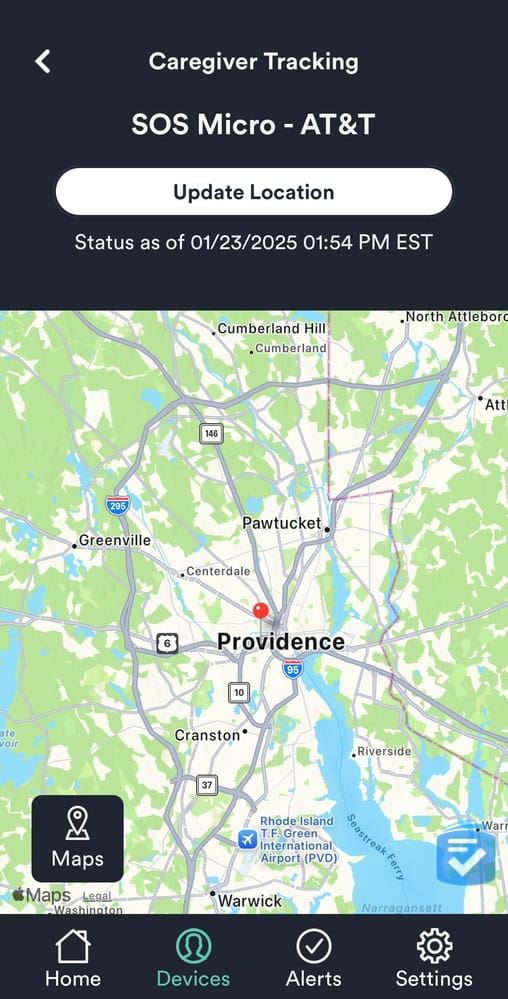
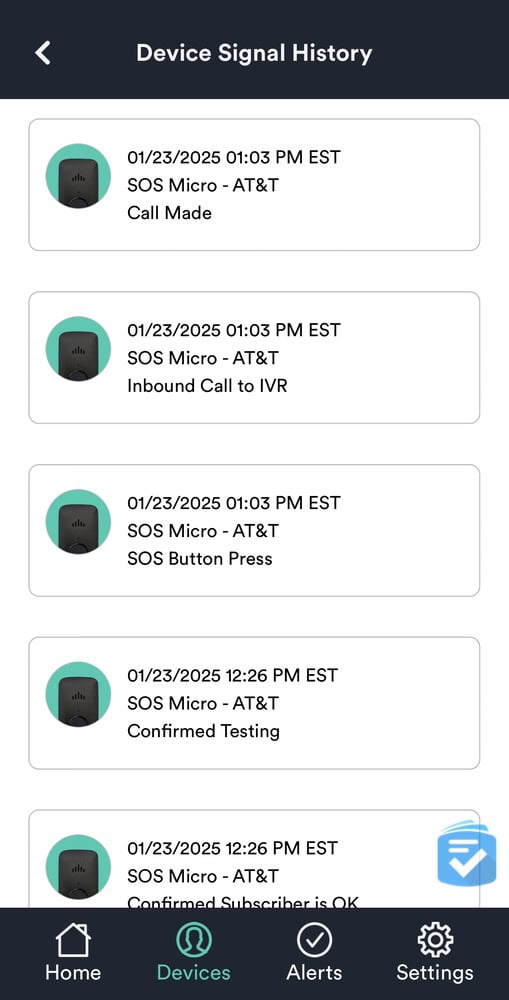
Included with the SOS Micro is access to the Bay Alarm Medical app for caregivers. Using this app, loved ones can track a device’s live location, view its battery life, and locate the device by sending a loud ring.
Loved ones also can receive notifications when an emergency call is placed, as well as when the device’s battery is low. That said, as with other Bay Alarm Medical systems, I found that these notifications were a bit spotty. Sometimes they were sent, and other times, nothing.
But that said, the app is free, and loved ones will likely appreciate the location-tracking capabilities. Hopefully, an update can address these notification issues.
SOS Micro Pricing
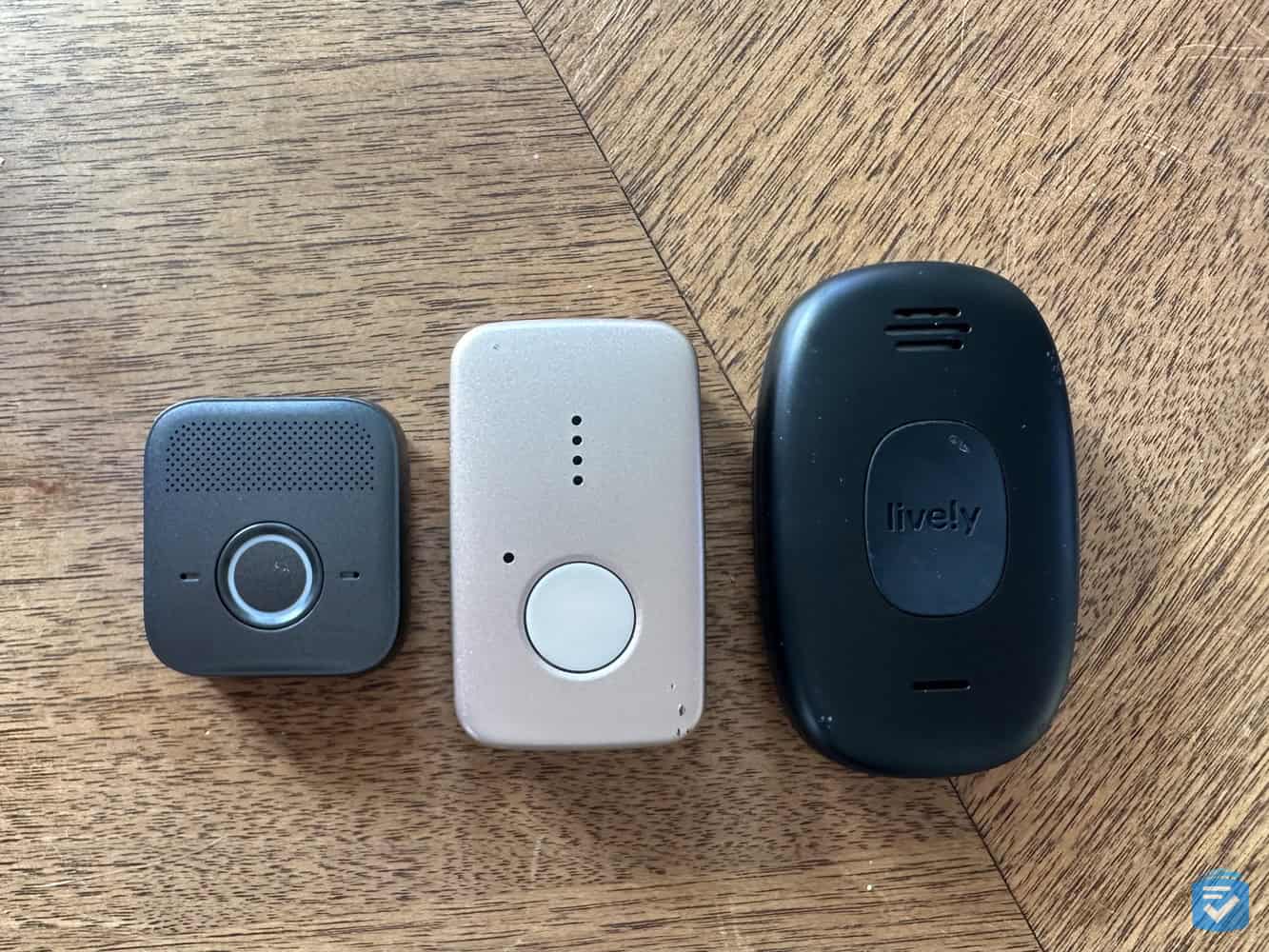
The SOS All-in-One costs $149 up front, which covers the price of your equipment. Then you’ll pay a monthly monitoring fee of $29.95. Optional fall detection costs an extra $10 per month, but the caregiver app is included at no extra charge.
Overall, these prices are ever so slightly higher than average. For example, the Lively Mobile2, which has similar features, costs an initial $79.99 and $24.99 monthly. The Iris Ally from Consumer Cellular, for another example, costs $89 up front and $25 a month, but with fall detection included.
That said, the SOS Micro is smaller than both of these devices, so its compact size might justify the price if a discreet device is a priority. Also, Bay Alarm Medical requires no long-term contracts, so if you don’t like your device, you can cancel your service at any time and stop making monthly payments.
SOS Micro vs. MGMini Lite
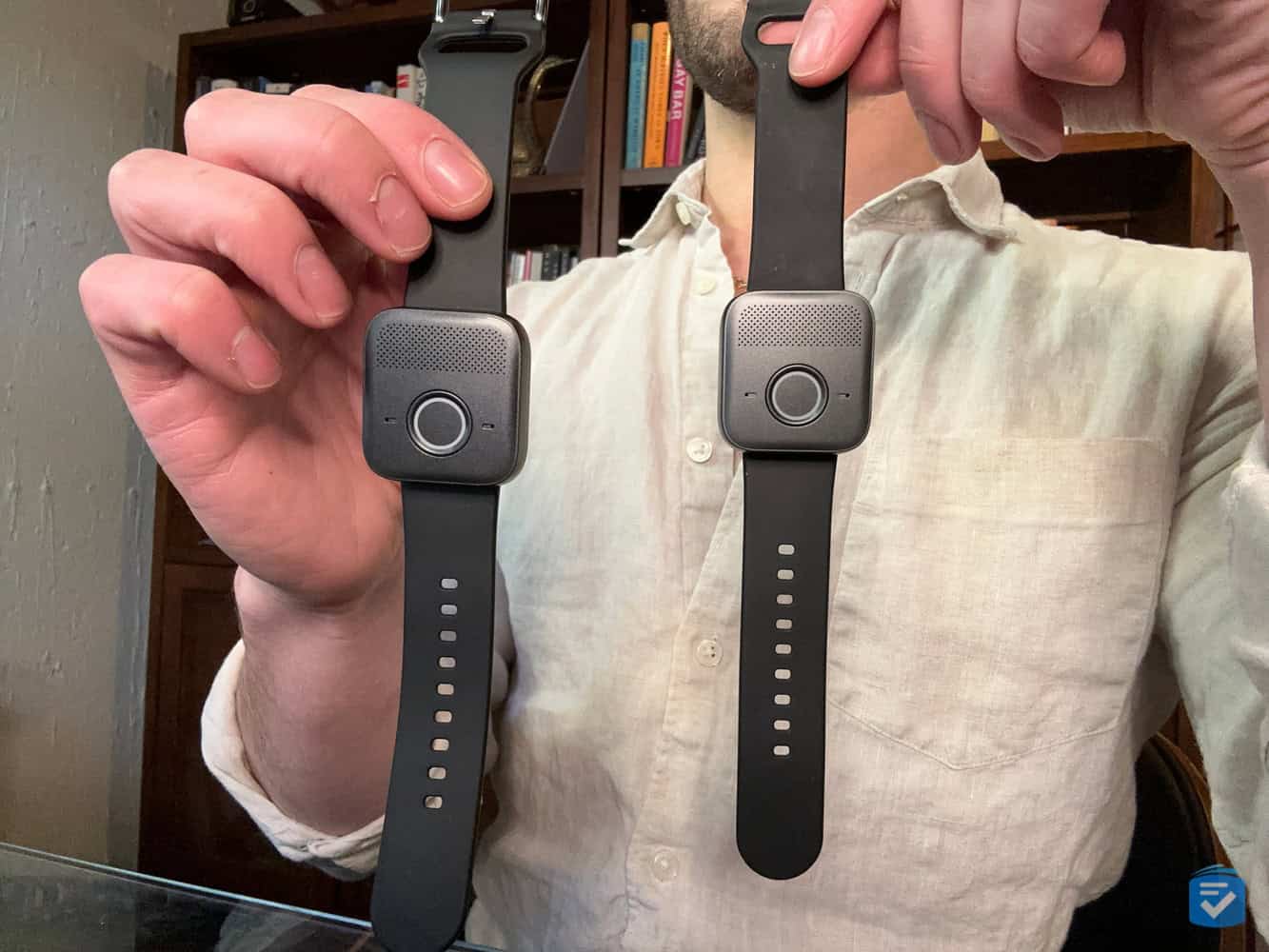
I briefly compared the LifeFone VIPx to the Lively Mobile2. Another interesting comparison is between the SOS Micro and the MGMini Lite from Medical Guardian.
As you can see, these two devices sold by Bay Alarm Medical and Medical Guardian, respectively, appear to be identical. And considering they share the same FCC ID, they are, in fact, the same device, just sold under different names by two different companies. Both devices have built-in GPS, fall detection, and companion caregiver apps; however, there are a few key differences.
First, the SOS Micro includes a lanyard attachment so you can wear it around your neck, while the MGMini Lite only includes the wristband.
Next, there’s the pricing. Both systems have similar equipment charges of $149; however, the Micro costs $29.95 per month, while the MGMini Lite costs $46.95 per month.
And finally, we have response times. While both devices function nearly identically, I found that Medical Guardian response agents answered my test calls a bit faster than Bay Alarm Medical agents.
While the two devices are virtually identical, the SOS Micro is a bit more affordable, while the MGMini Lite offers faster response times, on average.
To learn more about our experience with this system, read our full MGMini Lite review.
Compare Bay Alarm Medical to Other Brands
Final Thoughts
If you’re looking for a versatile mobile device with ultrafast response times, the SOS Micro is a great choice. While its battery life is slightly shorter than that of other mobile systems, it’s still enough to get you through the day, and its free caregiver app is highly useful.
To learn more about our experience with these and other medical alert systems, be sure to check out our full rundown of this year’s best medical alert systems.
Frequently Asked Questions
-
How much does the SOS Micro cost?
The Bay Alarm Medical SOS Micro costs $149 up front and there’s a monthly charge of $29.95. No long-term contracts are required.
-
How long is the SOS Micro’s battery life?
In our tests, the SOS Micro lasted for 48 hours on a single charge. However, this battery life may vary based on usage.
-
Does the SOS Micro have features for caregivers?
The SOS Micro includes free access to the Bay Alarm Medical app. It can be used to track a device’s location, monitor its battery life, and receive alerts when a user places emergency calls.


